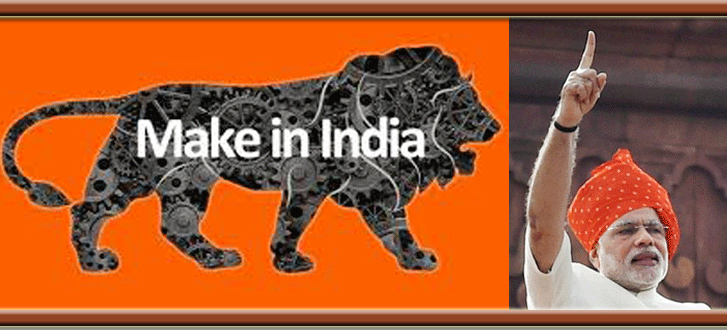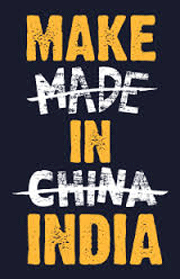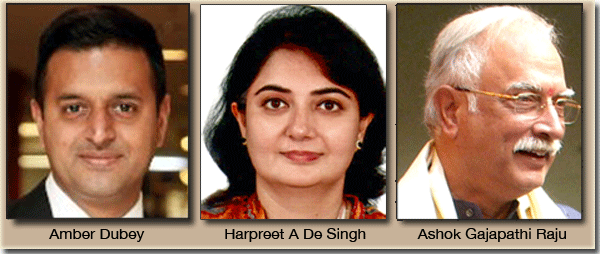
 Not
since “I Love New York” branded the world’s greatest
city to the world has a campaign been so well received by so many people. Not
since “I Love New York” branded the world’s greatest
city to the world has a campaign been so well received by so many people.
The recent visit of President Barack Obama
to India has suddenly witnessed a boost in the Indian Prime Minister’s
ambitious ‘Make in India’ initiative.
In fact, it was on August 15, 2014, India’s
Independence Day, that Prime Minister Narendra Modi sent out the call.
The PM declared:
“Let’s resolve to steer the
country to one destination. We have it in us to move in that direction.
“Come, Make in India.
“Come, manufacture in India.
“Sell in any country of the world
but manufacture here.
“We have got skill, talent, discipline,
and determination to do something.
“We want to give the world a favorable
opportunity.
“Come, I am giving you an invitation.”
The call came a day after India’s
successful Mars Orbiter Mission and before he left for his first visit
to the U.S. as Prime Minister. The ‘Make in India’ strategy
is based on: enhancement and improvement of infrastructure, easing business
through delicensing and deregulation, and, lastly, opening up Foreign
Direct Investment (FDI) in construction, railways, and defense.
Challenges
At Hand
With the improvement in infrastructure, roads
and railways, the logistics sector will benefit the most.
Freight forwarders and air cargo stakeholders
are hoping that the ‘Make in India’ campaign will bring in
better times. But before it does, the air freight sector has to counter
challenges at hand.
These include the obvious infrastructure.
Added to that are skill development, regulations, procedures, and mindsets.
 Airport
Edwards Airport
Edwards
To begin with, as Sanjiv Edward, Head of
Cargo at Delhi International Airport, who also serves on TIACA’s
Board of Directors, put it, “We can't compliment the speed in the
air with the product on the ground. That is why we are not able to make
inroads. We need to get our act together.”
The ‘act’ comprises good infrastructure
and the manner in which multimodal can be brought in to create efficiency
and ramp up the present air cargo business that is two percent of the
country's total freight business.
Kale on The
Menu
 Many in the air freight industry believe that the mindset of stakeholders
is still in the 1980s.
Many in the air freight industry believe that the mindset of stakeholders
is still in the 1980s.
This was clearly evident when the Mumbai
Airport introduced the GMAX community portal, which facilitated exchange
of information digitally at a nominal charge of five dollars per transaction.
The airport awarded Kale Logistics to run
the portal from the airport from the end of last year.
According to airport sources, joining the portal was voluntary but there
were a lot of protests.
When questioned, Amar More, Kale Logistics
vice president, said:
“I would like to clarify that GMAX
is a value-added optional service offered by Mumbai Airport to the trade,
for which a lot of forwarders—who want to avoid queues and manual
work and want progress—have already opted.”
 Forwarders
Have Their Say Forwarders
Have Their Say
Top freight forwarder and immediate past
President of Air Cargo Agents Association of India (ACAAI), Bharat Thakkar
declares: “My understanding is that this has not been imposed as
options are available and those who found merit have registered while
the rest are still using the old methods… “Technology
is the only way forward and with that one can do business at the touch
of a button, even from a remote location and any such development has
costs.”
Other Challenges
But there is even more India must do to
insure “Make In India” and the country moves ahead.
There are no proper regulations in place
for cargo.
There is not have enough emphasis on standardization
for the activities at the cargo complexes at airports and what qualifications
the people handling cargo possess.
 |
Harpreet A De Singh is
Air India's head of Corporate Quality, Safety, and Environment system.
She points out that, “there is as
lack of training for employees resulting in following no structured processes.”
Even so, air cargo stakeholders believe
that the environment is encouraging, as the air cargo sector looks to
the ‘Make in India’ formula, as well as the move to adopt
e-commerce, to boost manufacturing.
Amber Dubey, partner and head – Aviation,
KPMG, notes that the proliferation of e-commerce will “see a boost
to air cargo as India currently operates at a very low level of air cargo
penetration.”
With the growth in the market, there will
be demand to expand air cargo connectivity.
For its part the government is trying to
ensure that things move smoothly.
At a recent press conference Civil Aviation
Minister Ashok Gajapathi Raju was candid enough to accept that “existing
regulations are not helping the Indian aviation sector,” adding
that they “are focusing on removing some of the bottlenecks that
are affecting the sector.”
He also said that the present regulations
had curtailed airline operations and hampered the growth of the sector.
“We have to focus on removing bottlenecks
for the sector and make it sustainable again,” the Minister said.
Tirthankar Ghosh |





